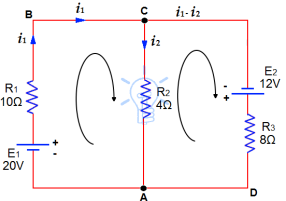MODULE-3
Linear differential equation
Question-1: Solve (4D² +4D -3)y = 
Solution: Auxiliary equation is 4m² +4m – 3 = 0
We get, (2m+3)(2m – 1) = 0
m =  ,
, 
Complementary function: CF is A + B
+ B
Now we will find particular integral,
P.I. =  f(x)
f(x)
=  .
. 
=  .
. 
=  .
. 
=  .
.  =
=  .
. 
General solution is y = CF + PI
= A + B
+ B .
. 
Question-2: Solve
Or,

Ans. Auxiliary equation is 


Question-3: Solve
Ans. Given, 
Auxiliary equation is 








Question-4: 
Ans. Auxiliary equation are 








Question-5: Solve 
Ans. The AE is 







Complete solution y= CF + PI

Question-6: Solve
Ans. The AE is 










Complete solutio0n is y= CF + PI

Question-7: solve
Ans. Given equation in symbolic form is

Its Auxiliary equation is 












Complete solution is y= CF + PI

Question-8: Solve(D3-7D-6) y=e2x (1+x)
Ans. The auxiliary equation i9s












Hence complete solution is y= CF + PI

Question-9: 
Ans. Putting, 




AE is 





CS = CF + PI


Question-10: solve  – y = 2x² - x – 3
– y = 2x² - x – 3
Solution.: first we find general solution:
The characteristic function is: r² - 1 = 0
( r-1)(r+1) = 0
R = 1, -1
General solution is - A + B
+ B ,
,
Now , let
y = ax² + bx +c
 = 2ax + b
= 2ax + b
 2a
2a
Put these value in  – y = 2x² - x – 3,
– y = 2x² - x – 3,
2a – (ax² + bx +c) = 2x² - x – 3
2a – ax² - bx - c = 2x² - x – 3
Now compare coeff.
Coeff. Of x² , a = -2
Coeff. Of x , b = 1
Constant coeff.
2a – c = -3, c =-1
So the particular solution will be,
y = -2x² + x – 1
Complete solution is,
y = A + B
+ B - 2x² + x – 1
- 2x² + x – 1
Question-11: Solve the following by using the method of variation of parameters.

Sol. This can be written as-

C.F.-
Auxiliary equation is- 
So that the C.F. Will be- 
P.I.-
Here 
Now 
Thus PI = 
= 
= 


So that the complete solution is-

Question-12: Resistors of R1= 10Ω, R2 = 4Ω and R3 = 8Ω are connected up to two batteries (of negligible resistance) as shown. Find the current through each resistor.

Solution:
Assume currents to flow in directions indicated by arrows
Apply KCL on junctions C and A
Therefore, current in mesh ABC = i1
Current in Mesh CA = i2
Then current in mesh is = i1- i2
Now, apply KVL on mesh ABC,20V are acting in clockwise direction,equating the sum of IR products, we get
10i1 +4i2 = 20.....(1)
In mesh ACD 12 volts are acting in clock-wise direction, then
8( i1 - i2)-4i2 = 12
 8 i1 - 8 i2-4i2 = 12
8 i1 - 8 i2-4i2 = 12
 8 i1 - 12 i2 = 12...(2)
8 i1 - 12 i2 = 12...(2)
Multiplying eq(1) by 3 we get
30 i1 + 12 i2 = 60
By solving equation 1 and 2 we get,
38i1 = 72
The above equation can be also simplified by elimination or cramer’s ruke
I1 = 72/38 = 1.895 Amperes = current in 10 ohms resistor
Substituting this value in (1) we get,
10(1.895)+4i2 = 20
4i2 = 20-18.95
I2 = 0.263 Amperes=current in 4 ohms resistors
Now ,
i1- i2 = 1.895-0.263=1.632 Amperes